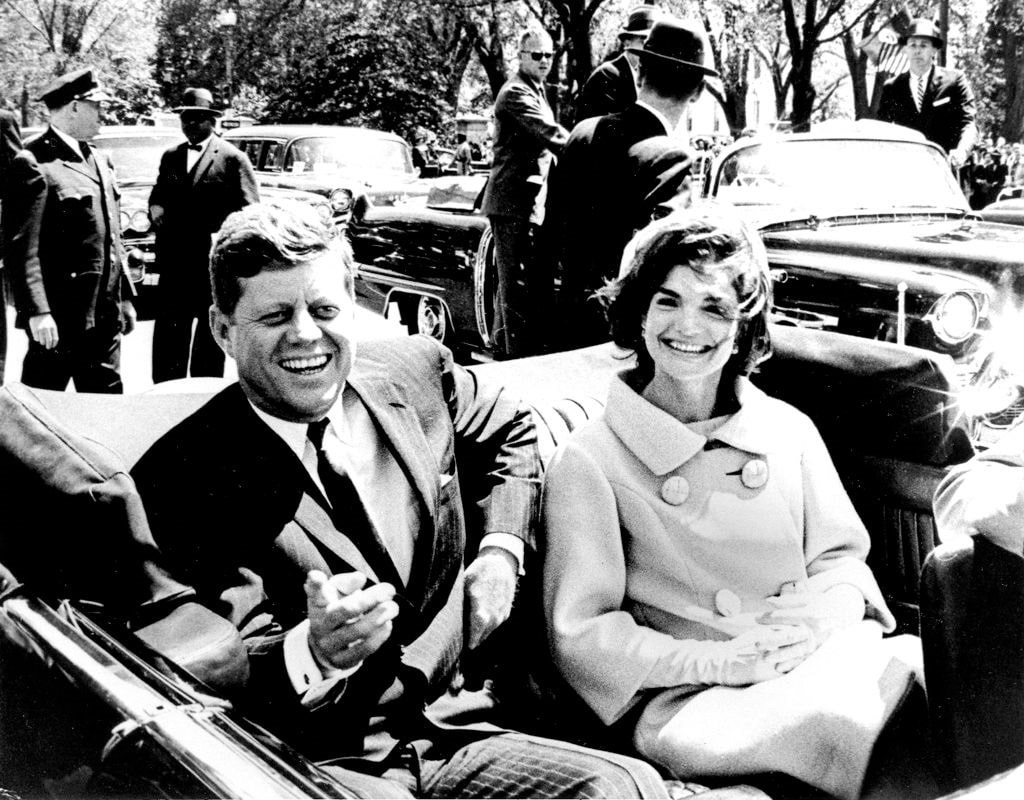Editor’s Note: Whether on screen or off, Hollywood can always be counted on to keep us entertained. This is especially true when it comes to politics. Liberty Nation’s HollyWeird column shines the spotlight on Tinseltown’s A-listers and their wild and wacky takes on today’s events.
Conspiracy theories are nothing new, but one of America’s biggest and still highly contested debates surrounds the assassination of President John F. Kennedy. Despite the Warren Commission report that concluded three shots were fired, two of which hit JFK, and that Lee Harvey Oswald was the sole shooter, critics argue the facts don’t add up and a magic bullet could not have killed the president and injured Texas Gov. John Connally Jr. Now, 60 years after that fateful day, a Secret Service agent who witnessed the shooting is releasing his memoir that sheds doubt on the single-bullet theory.
A New Twist in the JFK Assassination
Paul Landis was the youngest special agent of his time at just 24 in 1959. He worked his way up and was appointed to guard first the Kennedy children and then First Lady Jacqueline Kennedy. Because of his age and boyish looks, he received the codename Debut.
On Nov. 22, 1963, he stood on the right rear running board of the Secret Service follow-up car, which had the codename Halfback, in the president’s motorcade in Dallas. He was about 15 feet away from the president when the shots rang out, according to Landis’ account. When he heard the first shot, he looked over his right shoulder but didn’t see anything. When he looked back at the limousine, the president was raising his hands so Landis knew Kennedy had been hit. That’s when his partner, agent Clint Hill, leaped from their car and ran toward the limousine. Landis then heard a second shot that sounded louder than the first and a third and final shot that hit JFK in the head. He realized the president was dead, with Hill confirming it with a thumbs-down signal.

JFK and Jacqueline Kennedy (Photo via Smith Collection/Gado/Getty Images).
But here is where Landis’ story differs from other accounts. In his book, The Final Witness, the former Secret Service agent said when Kennedy had been transported to the hospital, he saw two bullet fragments in a pool of blood, but he also found a third bullet – the so-called magic bullet. It was mostly intact and lodged in the back seat of the limousine where the president had been sitting.
Landis, 28 at the time, pocketed the bullet to keep people from taking it as a souvenir. It was chaotic inside the hospital as doctors worked on JFK, so he placed the bullet on the president’s stretcher, hoping it would help investigators figure out what had happened. This is allegedly the bullet that was found on Connally’s stretcher. The Warren Commission report ruled out the option that the projectile had come from JFK’s stretcher because his body had never been moved from it while the doctors worked on him. Landis didn’t know how it had gotten to the governor’s gurney but suggested that, at some point, the stretchers must have bumped, and the bullet transferred from the president’s to the Texas lawmaker’s. Landis told The New York Times:
“’There was nobody there to secure the scene, and that was a big, big bother to me. All the agents that were there were focused on the president.’ A crowd was gathering. ‘This was all going on so quickly. And I was just afraid that — it was a piece of evidence, that I realized right away. Very important. And I didn’t want it to disappear or get lost. So it was, “Paul, you’ve got to make a decision,” and I grabbed it.’”
For critics who argue against the magic bullet theory, this is proof of holes in the Warren Commission report. Some of its findings were based on the “fact” that the bullet was found on Connally’s stretcher, and investigators surmised it had been dislodged while doctors worked on him.
The commission believed the bullet passed through Kennedy’s back, then entered the governor’s right shoulder, where it struck his rib and exited under his right nipple. The same bullet continued through Connally’s right wrist and into his left thigh. While doctors agree a single bullet could cause all that damage, skeptics point out the bullet had lost only one or two grains of its original weight of 160 or 161, The Times explained. James Robenalt, a lawyer and historical author who had helped Landis with his memories, said:
“If what he says is true, which I tend to believe, it is likely to reopen the question of a second shooter, if not even more. If the bullet we know as the magic or pristine bullet stopped in President Kennedy’s back, it means that the central thesis of the Warren Report, the single-bullet theory, is wrong.”
Robenalt added that if the governor had been hit by a separate bullet, it didn’t seem likely he’d been shot by Oswald who would not have had time to reload that fast.
Although Landis gave his testimony to the Secret Service, oddly enough he was never interviewed by the Warren Commission. He never said anything publicly about the bullet he had found and put on the president’s gurney.
So why did he wait 60 years to tell his story? The former agent said, at first, he was afraid of making the Secret Service look bad, but he was also traumatized from seeing the president murdered right before his eyes. He suffered from PTSD for decades and didn’t read any reports or conspiracy theories, or watch any news or shows on the assassination of JFK because it bothered him too much. He also quit the agency just months after, before the commission had finished its report.
About 50 years later, he was able to deal with everything he had suppressed and realized that he needed to come clean with what he had done. “There’s no goal at this point,” Landis said during an interview in Cleveland. “I just think it had been long enough that I needed to tell my story.”
 “This is really the most significant news in the assassination since 1963,” said Robenalt. However, some argue that memories 60 years after an event aren’t likely to be as accurate as at the time. Even Landis’ former partner, Hill, is doubtful of the account. In a 2014 email, Hill warned Landis that speaking out would have “many ramifications,” The Times wrote. In an email to the news outlet, Hill, who has written multiple books on his own experience, said, “I believe it raises concerns when the story he is telling now, 60 years after the fact, is different than the statements he wrote in the days following the tragedy. In my mind, there are serious inconsistencies in his various statements/stories.”
“This is really the most significant news in the assassination since 1963,” said Robenalt. However, some argue that memories 60 years after an event aren’t likely to be as accurate as at the time. Even Landis’ former partner, Hill, is doubtful of the account. In a 2014 email, Hill warned Landis that speaking out would have “many ramifications,” The Times wrote. In an email to the news outlet, Hill, who has written multiple books on his own experience, said, “I believe it raises concerns when the story he is telling now, 60 years after the fact, is different than the statements he wrote in the days following the tragedy. In my mind, there are serious inconsistencies in his various statements/stories.”
Ken Gormley helped Landis find an agent for his book and told The Times that it’s common for people near the end of their lives to set records straight. “They want to make peace with things,” he said. “They want to get on the table things they’ve been holding back, especially if it’s a piece of history and they want the record corrected.” He added that the book doesn’t look like Landis is seeking attention, but that the former agent firmly believes his memories.
The assassination of JFK has been a source of debates and conspiracy theories for years. People have accused the government, the CIA, the Mafia, and other countries of plotting the murder, and Larry Sabato, a historian at the University of Virginia, told CNN this is likely where Americans started losing faith and trust in the government:
“Our own government and its top agencies gave people plenty of reasons to doubt what they’ve said about Kennedy’s murder. In 1963 we bought pretty much anything the authorities told us — that’s how we were raised. Now, though, after decades of government lying about Vietnam, Watergate, Iran-Contra, 9/11, Afghanistan, Iraq, and a thousand other things, can you blame people for not buying what the Warren Commission was selling?”
The Final Witness will be available Oct. 10, published by Chicago Review Press.
Tune in next time to see what else Tinseltown has planned. For more HollyWeird, click here.




